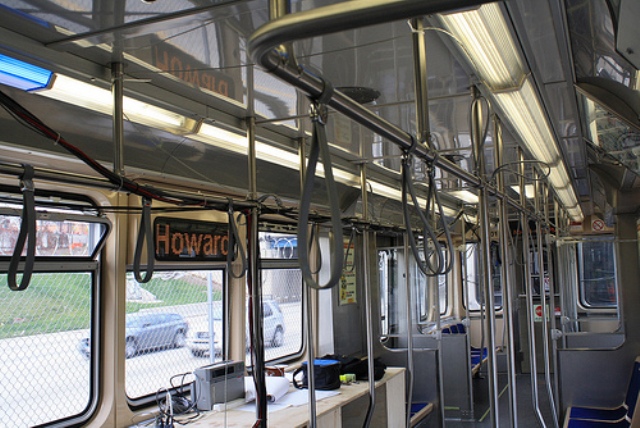CTA Unveils Seating Design For New Rail Cars
By Chuck Sudo in News on Aug 2, 2013 4:40PM
Chicago Transit Authority is hoping to avoid last year's civic outcry over the aisle-facing seating of the new 5000-series cars by offering a mix of aisle and transverse seating in the upcoming 7000-series rail cars.
CTA opened the bidding process on the 7000-series cars in February and said they would leave the seating design of the new cars up to the bidder. CTA President Forrest Claypool told Tribune transportation reporter John Hilkevitch the agency “not only conducted extensive field research, we also went to the people who ride the system every day for their feedback.” The most common complaints went something like, “Oh, God! We’re touching other people's thighs! We have to look at people’s crotches while trying to get home from work! EWWWWWW!!!!”
According to Hilkevitch, CTA research indicates people believe the legs of passengers seated in the aisle-facing seats impedes passenger flow, while others feel the new seating arrangement improves safety. So the middle of the 7000-series rail cars will contain "the maximum number of forward-facing seats in area that will not impede passenger flow,” something CTA calls an “asymmetrical mix.” The winning bidder will have to work under this design and each car will contain the same number of seats as the 5000-series cars—38.
CTA is ordering 852 of the new cars and they're expected to join the system's fleet beginning in 2016. Streetsblog Chicago's Steven Vance wondered about other possible improvements to the new cars and spoke to designer and transit rider Kevin Zolkiewicz, who noted that while the 5000-series cars are a marked improvement, they don't go far enough and CTa need only study the designs of rail cars in other cities for inspiration
Electronic route displays are one feature that transit riders in other cities enjoy on their newer rail cars and would be welcome in Chicago. Manufacturers and the CTA should look to provide more useful information than what’s available on the 5000-series cars, which is limited to the current stop and the next stop.
The FIND system on the newest NYC subway cars, for instance, shows the next 10 stops and the bus and train connections one can make at each of those stops. It’s eminently more useful in a system that is highly-connected and has multiple routes to reach the same destination from the same origin, and it’s great for tourists and infrequent users. The greatest benefit may be that it’s future-proof: If a station comes on line, or a station goes out of service, the FIND system can easily be updated. It is much harder to update the CTA’s LED-display maps, in use on hundreds of 5000-series cars, any time a station is added or has its name changed. Zolkiewicz added that Bus and Train Tracker displays should be on the new cars as well..
